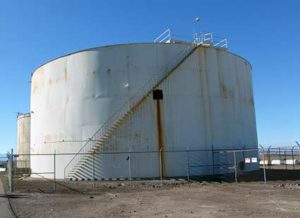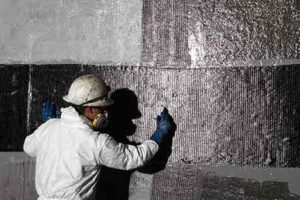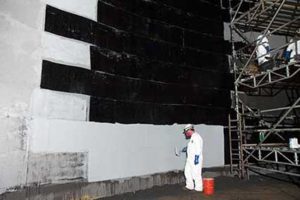††Revitalize Your Infrastructure: Avoid Costly Wastewater Tank Replacement Replacing wastewater tanks can be a costly and disruptive process, involving major construction, downtime, and environmental impact. A recent article from the Whittier Daily News highlights Ridgeline Energy Services in Santa Fe Springs, CA, as they begin demolishing 19 old tanks at their wastewater treatment facility. These tanks were located on the former Powerline Oil Co. refinery site and had been causing persistent odor issues due to the mixing of wastewater with residual sludge. Some of the tanks had leaked, allowing hydrogen sulfide gas to escape through roof openings, which affected air quality but wasn’t considered toxic. Each tank weighed 28 tons and could hold up to 16,800 gallons of wastewater. The metal from the demolition will be recycled, and the solution involved removing and destroying the tanks rather than repairing them. A Global Challenge This issue isn’t unique to one location. Steel tanks, over time, are prone to corrosion and leaks. While temporary fixes like steel plates may stop leaks, they often fail over time. A more sustainable and cost-effective alternative is the use of Carbon Fiber Reinforced Polymer (CFRP) solutions, such as HJ3’s CarbonSeal system. Replacing tanks not only costs millions in materials and labor but also has a significant environmental footprint—producing one ton of steel requires about 60,000 gallons of water. For Ridgeline, replacing 19 tanks would have used around 32 million gallons of water. A Success Story: NRG Energy HJ3’s CarbonSeal system has proven to be an effective solution that saves both money and the environment. One notable example is NRG Energy, a major power generation company. At one of its facilities, a 2-million-gallon wastewater tank was leaking despite previous attempts at repair using steel plates, which only led to more problems, including thousands of through-holes in the walls and floors. The initial repair scope included the tank’s walls, floor, and support columns. During surface preparation and hydro-blasting, 4,300 additional holes were discovered, requiring further reinforcement. Steel plates were applied to cover the holes, and then HJ3’s CarbonSeal carbon fiber system was used for full structural reinforcement. Surfaces were sandblasted, cleaned, inspected, tested, and primed to prevent flash rusting. After applying HJ3’s primer and high-modulus paste, the carbon fiber reinforcement was carefully installed on the walls, floor, and support columns, followed by a chemical-resistant topcoat for long-term protection. A Sustainable Solution Thanks to HJ3’s CarbonSeal system, NRG’s wastewater tank is expected to last another 30 years, avoiding the need for a costly replacement. This approach saved the plant millions in expenses and significantly reduced its environmental impact. Compared to full replacement, NRG achieved a 90% reduction in energy use, 96% fewer CO2 emissions, and conserved 60 million gallons of water. That’s a saving of over $3 million, or 75%. Whether you're dealing with a leaking wastewater tank or looking for eco-friendly repair solutions, contact our project managers today to learn how we can help you extend the life of your infrastructure while protecting the planet. †††Horizontal machining center refers to a machining center where the spindle is parallel to the worktable, usually equipped with an automatic indexing rotary worktable, which generally has 3-5 motion coordinates. The worktable of a horizontal machining center is designed to move only in the X or Y direction, and the worktable form is generally a rotating worktable with a lattice screw hole table, which is relatively easy to install an exchange type dual worktable. The common method is to add three linear motion coordinates and one rotary motion coordinate. After a single clamping, the workpiece completes the machining of the other four surfaces except for the installation surface and top surface. It is most suitable for adding box type parts. Horizontal Machining Center 4 axis,Machining Center Horizontal,Horizontal Machining Centre,4 axis cnc, Machining Centre Dongguan Liyang Intelligent Technology Co., Ltd , https://www.leyomachine.com



Horizontal Machining Centers characteristics:
1.Horizontal machining center structural characteristics: A horizontal machining center refers to a complex structure with the spindle parallel to the workbench, occupying a large area, and being relatively expensive. Due to the fact that the spindle is parallel to the worktable, the rotation axis of the spindle is parallel to the worktable, which allows for a wider range of machining operations. Horizontal machining centers are usually suitable for processing large workpieces and parts that require multi sided machining.
2. Horizontal machining center application characteristics: Due to its complex structure, large footprint, and high price, horizontal machining centers are usually suitable for processing large parts and multi sided machining parts. Due to the parallel spindle of the horizontal machining center to the worktable, it can achieve simultaneous machining of multiple surfaces and improve production efficiency. Horizontal machining centers are also suitable for large parts that require rough and precision machining, such as machine tool beds, automotive components, etc.
3. Horizontal machining center processing characteristics: Due to its complex structure, large footprint, and high cost, horizontal machining centers are usually suitable for processing large parts and multi sided machining parts. Due to the parallel spindle of the horizontal machining center to the worktable, it can achieve simultaneous machining of multiple surfaces and improve production efficiency. Horizontal machining centers are also suitable for large parts that require rough and precision machining, such as machine tool beds, automotive components, etc.
Green Solutions Save Millions For Tank Repairs
